15 Wildflowers That Grow In South Dakota (Identification Guide With Pictures)
-
Greg Iacono
- Last updated:
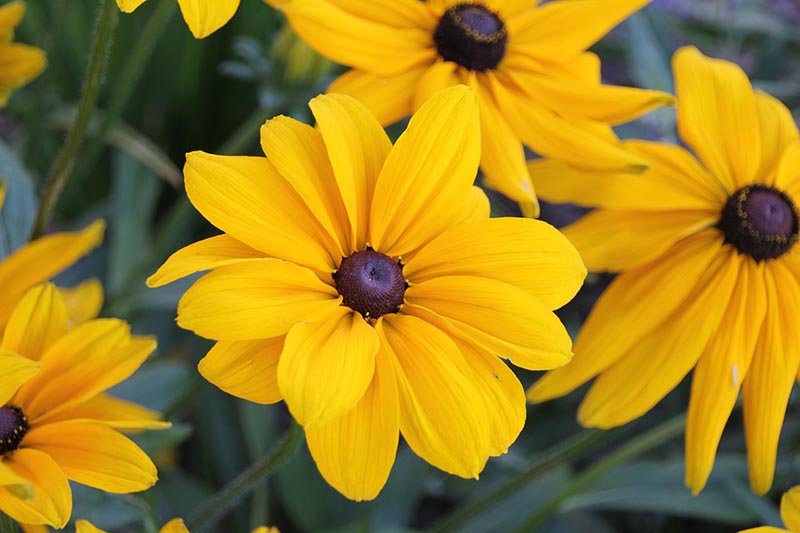
Although located in US Hardiness Zones 4 and 5, South Dakota still has several remarkable wildflowers. A drive through the Mount Rushmore State in spring and summer will reveal a bounty of beautiful wildflowers to see and enjoy. If you’re planning to visit South Dakota sometime soon and want to know about the wildflowers you’ll find there, here’s our list of the 15 wildflower varieties that grow in South Dakota, along with pictures and other details to identify them.
The 15 Wildflowers That Grow In South Dakota
1. Wild Bergamot
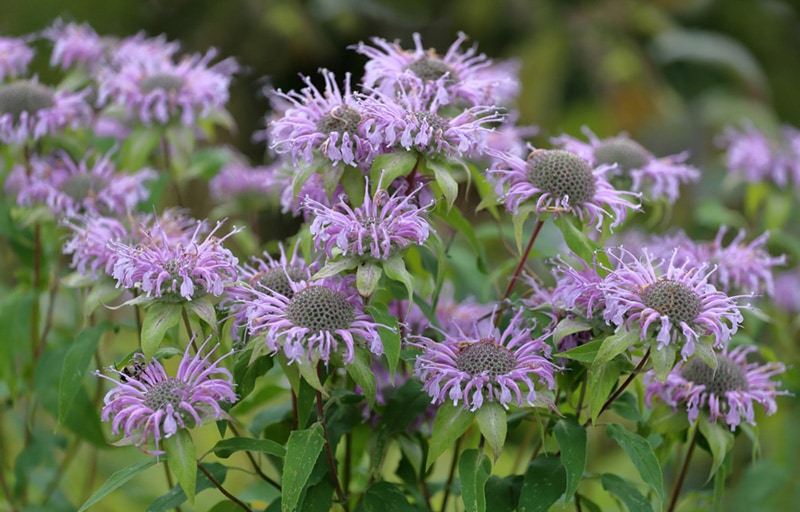
| Family: | Mint |
| Scientific Name: | Monarda Fistulosa |
| Blooming Times: | July and August |
It’s easy to spot wild bergamot in South Dakota as the flowers are larger than most and grow on stems that can reach 3 feet in height. The flowers are a light purple color and grow in large bunches wherever you find them. The flower is also known as bee balm and has medicinal properties, as well as being a favorite for honey-making bees.
- Flowers look like ragged pom poms
- Grows in large patches of flowers
- Flowers can be white, pink, and lavender
- Tall, slender, open-branched stems
2. Stemless Hymenoxys
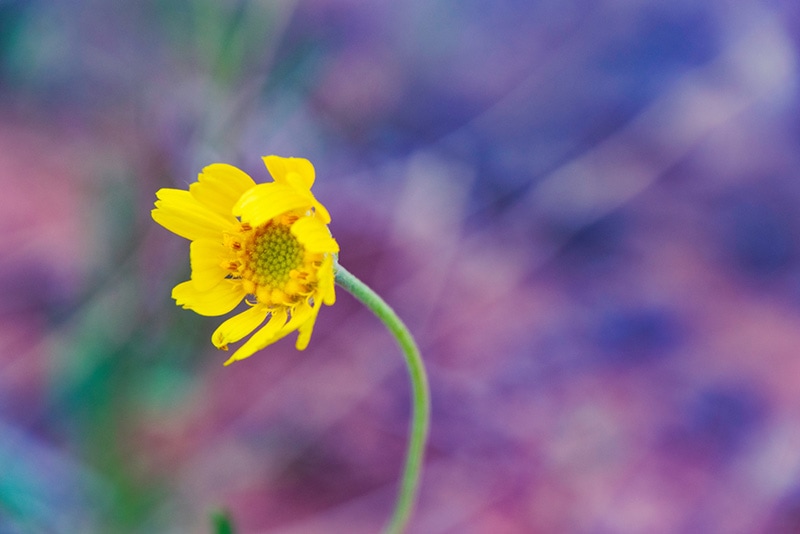
| Family: | Aster |
| Scientific Name: | Tetraneuris acaulis |
| Blooming Times: | June through September |
What’s fascinating about this wildflower is that it needs almost no soil to grow but prefers rocky outcroppings. The stemless hymenoxys is a relatively short-stemmed flower that’s usually less than 1 foot tall. It has bright yellow flowers with rectangular petals and, as its name suggests, is stemless, making it one of the most unusual wildflowers you’ll find in South Dakota.
- The flowers look like a child’s drawing of the sun
- The center is bright yellow and rounded
- Grow on stemless stalks
- Petals are rectangular and spread apart
3. Gunnison’s Mariposa Lily
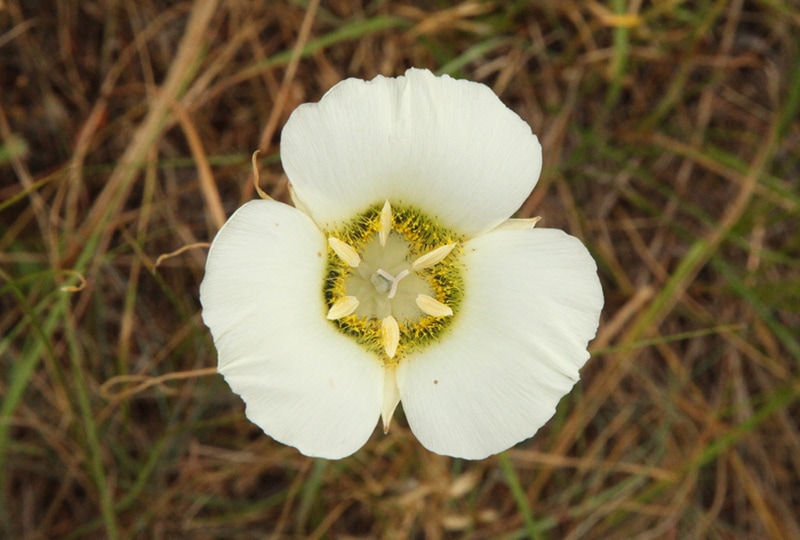
| Family: | Lily |
| Scientific Name: | Calochortus gunnisonii |
| Blooming Times: | June through August |
This delicate wildflower has a thin stem and, when in bloom, three white petals surround it with delicate stamens. The flowers can also be a light purple color. Finding the Gunnison’s Mariposa Lily isn’t easy as it tends to grow at very high elevations above 3,200 feet and up to nearly 11,000 feet. It thrives in dry meadows that are often covered by sagebrush. The term “mariposa” in its name means butterfly in Spanish. These are also edible flowers that many animals enjoy for their sweet taste.
- Looks like a tulip
- Three large, white petals with long, white stamens
- Grows only in high elevations
4. Wild Blue Flax
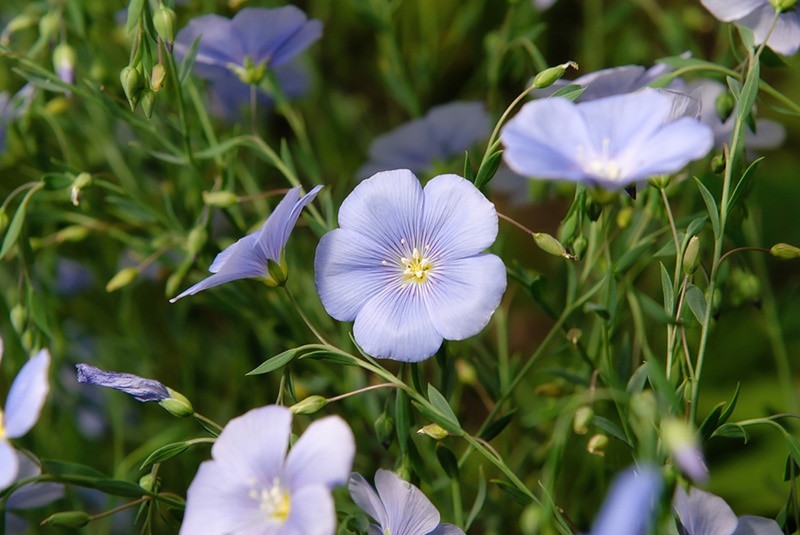
| Family: | Flax |
| Scientific Name: | Linum lewisii |
| Blooming Times: | June through August |
Many call wild blue flax an overlooked gem as its stems are useful to make many items like nets and baskets. The flower itself is quite lovely and displays bright blue flowers that open when the sun comes up. Like several in South Dakota, this wildflower doesn’t need a lot of soil to thrive but still grows to nearly 3 feet tall. Although it’s not considered a pollinator, you’ll find bees and other insects buzzing around the wild blue flax in the early morning hours.
- Usually has five delicate blue petals
- Petals have dark blue veins
- Many seed pods surround flowers
5. Rocky Mountain Iris
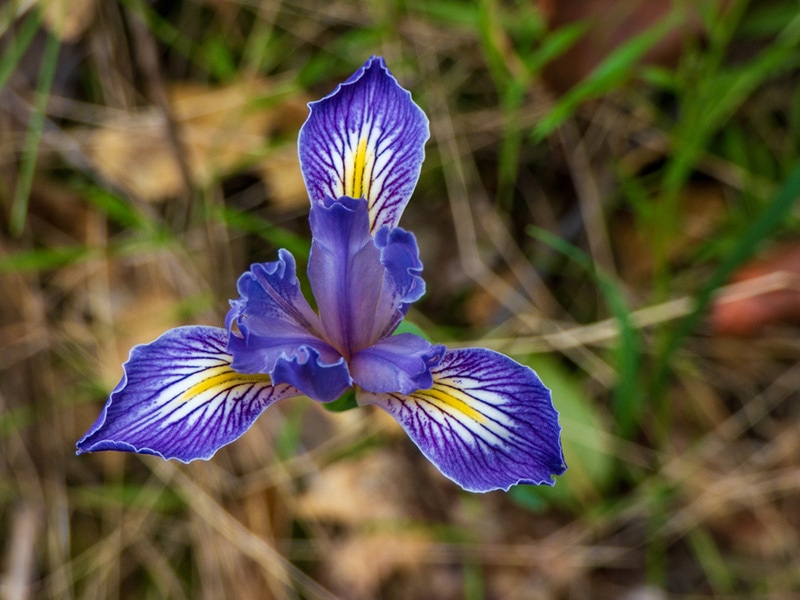
| Family: | Iris |
| Scientific Name: | Iris missouriensis |
| Blooming Times: | May and June |
Although you won’t spot it often, when you see the rocky mountain iris, you won’t be able to miss it. That’s because its leaves are shaped like swords and are large and showy. Like the wild blue flax, the rocky mountain iris has stems that can be made into various items like rope, string, and fishing nets. Unlike some wildflowers in South Dakota that you can eat, the stems and leaves of this one are toxic and thus resistant to deer.
- Leaves are sword-shaped
- Large purple and lilac flowers look like spades
- Has long, slender stems
6. Black Eyed Susan

| Family: | Aster |
| Scientific Name: | Rudbeckia hirta |
| Blooming Times: | June through August |
Many folks in South Dakota grow the black-eyed Susan to prevent soil erosion. However, you’ll find it all over the state, growing wild along hillsides and highways. It looks like a small sunflower in some ways, with a brown center surrounded by bright yellow petals. This beautiful wildflower can reach 30 inches tall and is usually tinged orange towards the center. It’s used often in bouquets and is a favorite of butterflies, birds, and bees.
- Large, brown center surrounded by wispy yellow petals
- Looks like a small sunflower
- Leaves are rough to the touch
7. Wavyleaf Thistle
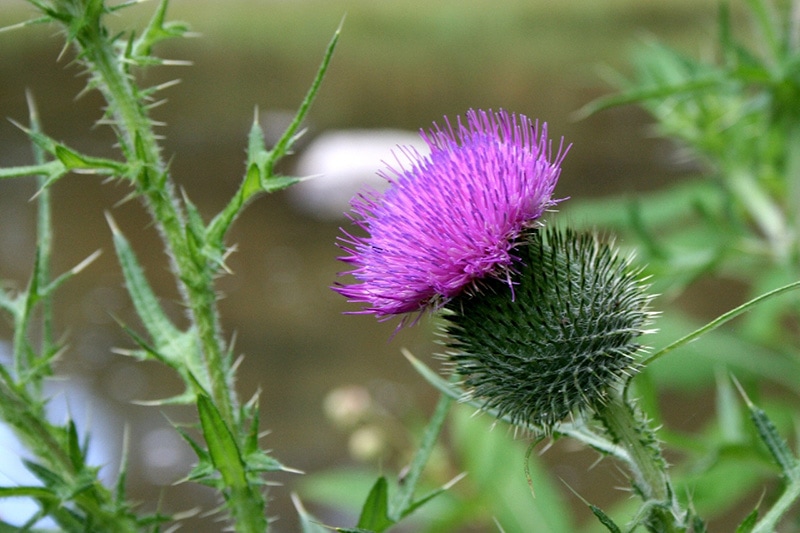
| Family: | Aster |
| Scientific Name: | Cirsium undulatum |
| Blooming Times: | June through September |
The wavyleaf thistle is one of the few thistles in South Dakota, which is a shame as they tend to be big attractors of butterflies. The flowers vary in color from light pink to lavender and have wavy leaves. Amazingly these wildflowers grow to 3 and 4 feet tall but can reach 7 feet. The flowers, however, are relatively small and look more like pincushions. The stems can sometimes look a bit white.
- Very dense and hairy leaves
- Very tall stems that can appear creamy white
- Colors range from pink to lavender
8. Woolly Verbena

| Family: | Vervain |
| Scientific Name: | Verbena stricta |
| Blooming Times: | June through September |
This atypical wildflower is highly resistant to drought. It looks very similar to lavender, with tall stems that have small, purple flowers. One thing to note about this beautiful flower is that it’s very popular with bees and is a fantastic pollinator. Butterflies are attracted to it also, and you’ll likely see plenty of both when you spot woolly verbena.
- The flowers look similar to lavender
- Many small flowers grow in a bunch
- Densely hairy tops
- Leaves feel like velvet
9. Stiff Goldenrod
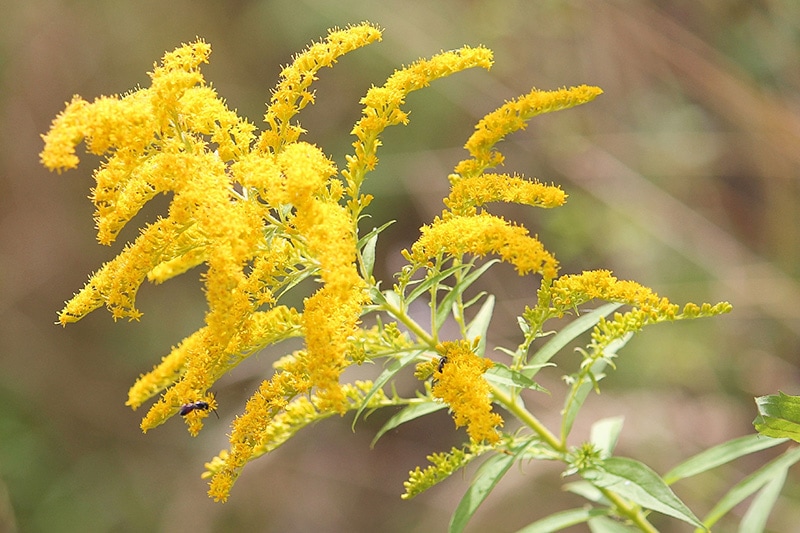
| Family: | Aster |
| Scientific Name: | Solidago rigida |
| Blooming Times: | July through September |
Many of the wildflowers on today’s list attract bees and butterflies but none quite so much as the stiff goldenrod. The reason is that it’s an excellent pollen and nectar source for them, even though the flowers are relatively small. The stems grow to between 1 and 2 feet tall, and you’ll find this interesting wildflower all over the state, especially along trails and in large fields. Stiff goldenrod can tolerate a wide range of soil conditions and seems to thrive where it’s most inhospitable.
- Looks like cauliflower florets
- Tiny yellow flowers grow in large clusters
- Stems are tall and wood-like
- Leaves feel like leather
10. Harebell
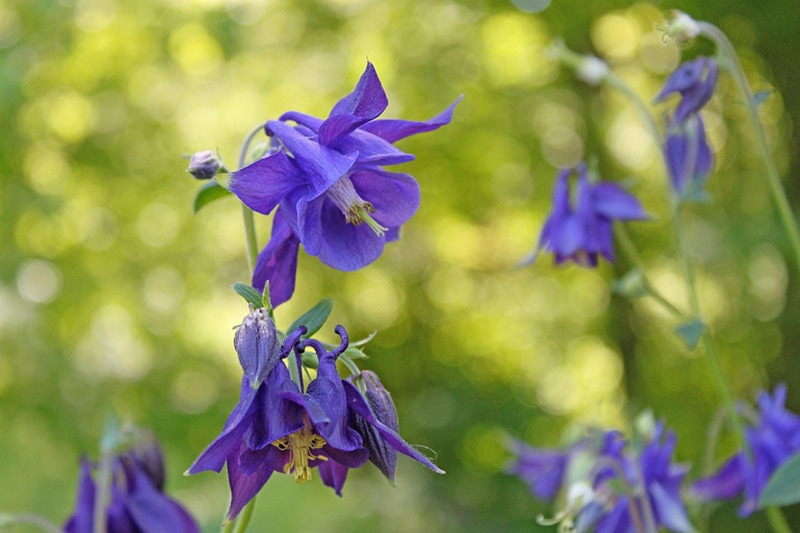
| Family: | Bellflower |
| Scientific Name: | Campanula rotundifolia |
| Blooming Times: | July and August |
It’s difficult to find harebells in South Dakota since they only emerge in tiny groups of two to four plants. This delicate and delightful wildflower looks amazing after it rains as the flowers droop down and look like elegant bells. The color of the flowers ranges from dark blue to light lavender, and they can grow to about 15 inches tall. Because of their color, the flowers are also known around the state as bluebells. Interestingly, the harebell is associated closely with Scotland.
- The flower looks like a bell when it droops
- Six purple, blue, or lavender petals
- Found in sparse groupings of three to five plants
11. Rocky Mountain Gayfeather
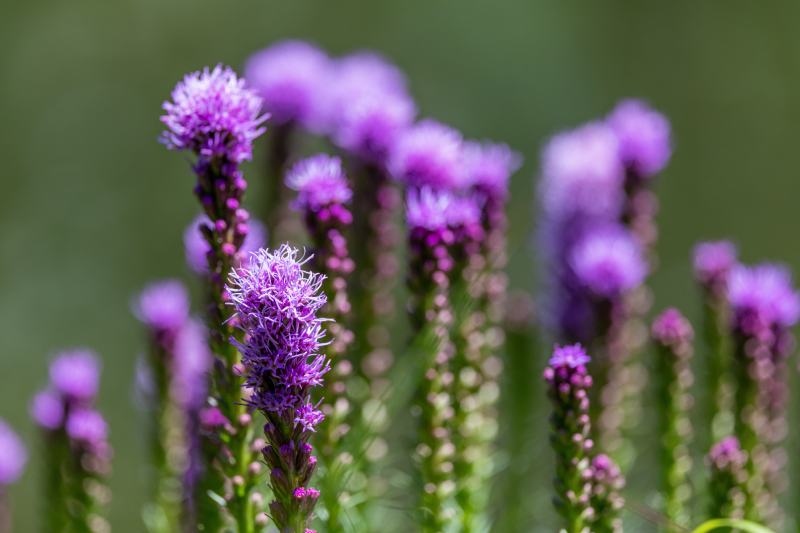
| Family: | Aster |
| Scientific Name: | Liatris Lingulistylis |
| Blooming Times: |
The rocky mountain gayfeather displays some of the fanciful flowers found in books by the beloved Dr. Suess. The flowers are dark, dense purple spikes with stems that can reach 30 inches and have leaves that resemble spears. When you find these fascinating wildflowers, you’ll often see Monarch butterflies feeding on the nectar. They are a hardy flower variety that can tolerate harsh conditions, including drought, poor soil quality, and high heat.
- Many flowers bloom on one larger stem
- Unique flowers look like pom poms
- Stems are slender and very tall
12. Threenerve Fleabane

| Family: | Aster |
| Scientific Name: | Erigeron subtrinervis |
| Blooming Times: | July and August |
You’ll find the threenerve fleabane flower all over South Dakota, especially in open forests and the Black Hills. What’s unique about them is that the head of each flower contains between 100 and 150 lavender-colored florets circling just as many small yellow florets in the center. This wildflower is easy to find and has flowers that can reach nearly 3 inches in diameter. It gets its name from the three prominent veins on each of its leaves.
- Many thin, delicate petals in purple and lavender
- Flower heads are quite large, over 2 inches in diameter
- Leaves have three distinct nerves
13. Prairie Coneflower
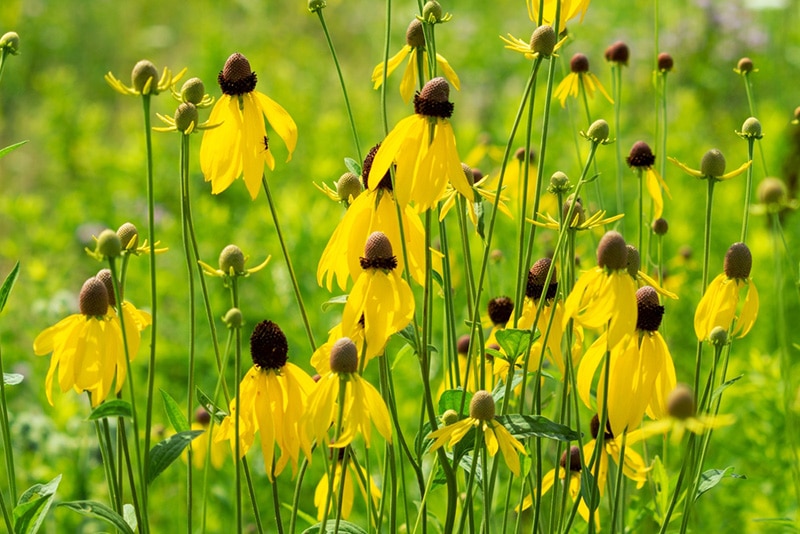
| Family: | Aster |
| Scientific Name: | Ratibida columnifera |
| Blooming Times: | July and August |
The prairie coneflower reaches up to 6 feet in height and can be found in many locations throughout South Dakota. These are unique wildflowers with a large, brown cone on top and about a dozen delicate yellow petals that hang underneath. Because of its unique look, the prairie coneflower is also known as the Mexican hat flower. It looks like a Mexican sombrero. It’s drought-tolerant, resistant to many pests and diseases, and can thrive in practically any type of soil.
- Very distinct brown cone on top
- Yellow flower petals droop underneath
- Can sometimes be streaked with red
14. Missouri Milkvetch

| Family: | Pea |
| Scientific Name: | Astragalus missouriensis |
| Blooming Times: | June through August |
One of the shortest wildflowers in South Dakota is the Missouri Milkvetch. It’s also one of the most unique, with seed pods that inflate and, as they mature, attain a leathery texture. The flower’s petals are typically purple but can also be white with a splotch of color towards the center. You won’t find these interesting wildflowers in many areas but when you do, there are usually many of them. They are difficult to spot because they’re so low to the ground and will often be blocked from view by other wildflowers and grasses.
- Very short stems and low-to-ground flowers
- Seed pods look leathery as they mature
- Sepals are hairy and pointed
- Leaves can often look white
15. Pasqueflower

| Family: | Buttercup |
| Scientific Name: | Anemone patens |
| Blooming Times: | March through May |
The last flower on our list today also has the distinction of being named South Dakota’s official state flower way back in 1903. The pasqueflower is also one of the first wildflowers to bloom every year and, for many, is a sign that the state’s long, cold winter has finally ended. Its stem is covered by thousands of silk-like hairs which insulate it from cooler temperatures in early spring. The Pasqueflower is also known as the May Day Flower and Easter Flower because it blooms early.
- Very low-growing flower
- Lavender petals
- Stems covered with silky hairs
- The Center is bright yellow
Final Thoughts
Hopefully, you now have all the information you need to identify the most common wildflowers that grow in the great state of South Dakota. Many of them are similar, so knowing the unique differences will be helpful when trying to identify them. One thing is certain; when traveling through South Dakota, everyone in your family will be relying on you to identify all the beautiful wildflowers you spot!
Featured Image Credit: sapaulson, Pixabay
Contents
